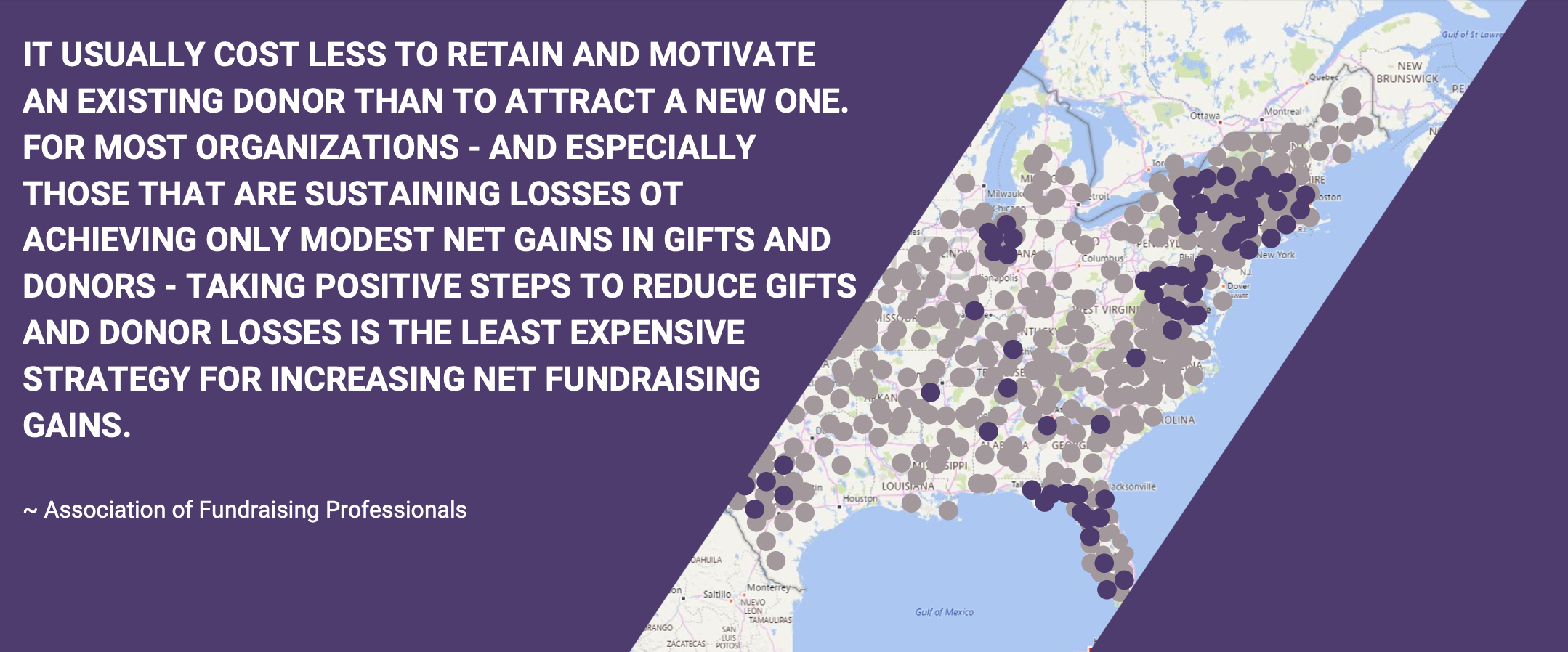
Donor And Registration Page Abandonment
How To Win Alumni Back
It usually cost less to retain and motivate an existing donor than to attract a newline. For most organizations - and especially those that are sustaining losses to achieving only modest net gains in gifts and donors - taking positive steps to reduce gifts and donor losses is the least expensive strategy for increasing net fundraising gains. Retention is a lower-cost solution than acquisition. Donor abandonment is the first line of defense in your retention strategy.
Lisa Eickoff (not her real name) is browsing your university website. Lisa is an alumna from the Class of 1968 and we know from previous research she has a giving capacity of $1.2 Million. Right now, she is browsing the “1968 class reunion” page but hasn’t clicked on any registration or donation links. And as you are reading this, she signs off and is no longer looking at your website.
What happened here? Will we see a gift from Lisa in the future?
For most universities, non-profits, and other donor-funded organizations, Lisa would be a missed opportunity. She was a well-qualified donor with a good propensity to donate, but she didn’t complete the process. And in most cases, you don’t know she was browsing your website and you don’t know she was very close to donating or attending a class reunion.
Keep in mind this statistic: Universities and colleges lose $4.2 billion annually. Under-utilized data and analytics can recover 30-40% of that amount.
USE ANALYTICS TO SOLVE THE AWARENESS PROBLEM
Think about your experience when you shop online. If you abandon a cart on Amazon or Crate and Barrel, you might receive the "We think you forgot something email..." with an incentive to buy it at 25% off. Retailers want to incentivize you to buy and in the case of donor relations, it's just as essential for fundraisers to connect with donors at the right time and with the right message.
Let’s revisit Lisa on your website. Let’s say, hypothetically that you could know she abandoned the page in near real-time. Your university might have a gift officer within a 20-minute drive of Lisa’s house who could grab coffee with her to “say hello.” Without the awareness of the event, you can’t act on it.
According to a 2016 study called “Fundraising Effectiveness Project (FEP)” by the Association of Fundraising Professionals, universities & colleges lose $4.2Billion annually. Under-utilized data and increased awareness through analytics can account for 30-40% of that. The awareness of key events and the ability to act upon it can recover lost donations. A simple 3-step approach is crucial to recovering that 30-40% and the following illustrates our approach:

To summarize:
Clean and prepare the information you do have about your alumni, donors, and fans. Bring the information into one place so it is easy to analyze.
Use third-party data sources to build an up-to-date and comprehensive profile of your donors so you know who has the ability to donate so you can focus your efforts on those individuals and organizations.
Using statistical modelling and your own donation history data, donors can be segmented to identify those individuals or organization who have the ability and the willingness to donate. These are the people you target.
DONOR REGISTRATION AND ABANDONMENT
A local Boston-based university studied 2 years of abandonment data, they identified the lost opportunities below:

During a pilot project, they discovered that 30% of the abandoners, if contacted by a gift officer 24-48 hours after abandonment, made much larger than expected donations. Converting just 10% of those lost opportunities would have been, conservatively, an ROI of $9,622,600 realized-return on investment for this university. This rate of return has also been substantiated at other universities, such as Dickinson College* in Pennsylvania. (See * From “Winning Donor Mindshare in the Attention Economy” by the EAB. )

WEB INTELLIGENCE MEETS HUMAN INTELLIGENCE
The awareness gained by using this technology needs to be paired with the relationship-building efforts of your gift-officers and advancement staff. With the awareness that is gained through the technology and the human interaction of a follow-up call or coffee, your organization can see the incremental 30-40% return.
RETENTION IS A LOWER-COST SOLUTION THAN ACQUISITION. DONOR ABANDONMENT IS THE FIRST LINE OF DEFENSE IN YOUR RETENTION STRATEGY.
And coming back to Lisa, she was contacted 24 hours after abandoning the website. The gift officer called her at home, and when Lisa answered the phone, her response was “I am so glad you called. I was just thinking about you…” The story ends with Lisa donating $3,000 while on the call.